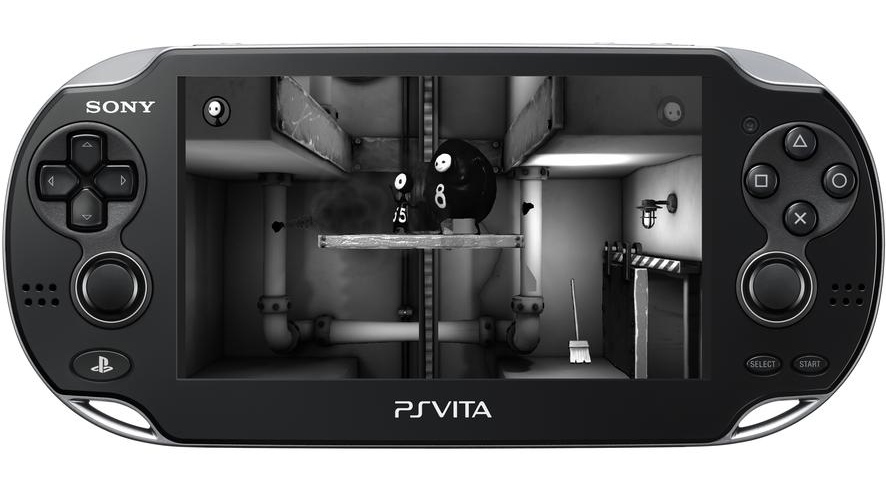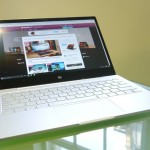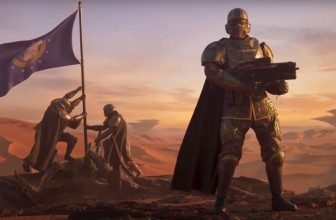
PlayStation Portable Consoles
As the PS4 runs laps around the Wii U in sales each month, it’s easy to forget that there is still one area that Sony could never quite top Nintendo: handhelds.
Despite Nintendo practically inventing on-the-go gaming with the original Game Boy back in ’89, that never scared Sony from going all out to take on the Big N in the portable arena.
While its attempts were noble – even superior in certain aspects – Sony’s handhelds have never quite replicated the success of Nintendo’s counterparts.
So, where did Sony falter and what could Sony have done better in retrospect? Let’s take a look at three of the company’s biggest shots on Nintendo’s goal, followed by where we think Sony succeeded – and where they missed the mark.

The PlayStation Portable
Released: 2004
What it did right: The PSP was Sony’s first attempt to bring the PlayStation brand to handhelds – unless you want to be petty and include the PocketStation peripheral.
When the PSP hit the scene, it came out swinging. The device didn’t just put Nintendo’s handhelds to shame graphically, thanks to its impressively massive widescreen display, but also offered a decent library featuring both first-party games and full-length movies and television, thanks to its proprietary Universal Media Disc, or UMD.
The PSP also became a favorite for many commuters thanks to its multimedia capabilities. In an era where smartphones hadn’t yet taken over, the PSP let owners keep entire collections of games, movies, and music in their pocket – a feature you still don’t see advertised on a Nintendo platform.
What went wrong: Now, to be fair, the PSP was an objective success. The device sold over 76 million units worldwide over the course of its eight-year lifespan, and set a high bar for how much power you can cram into a single handheld.
In the end, though, the device’s downfall was its competitor – the Nintendo DS, AKA one of the best-selling pieces of hardware in gaming history.
Even though Sony’s device was selling by the millions, Nintendo’s money-printing handheld was selling by the tens of millions thanks to its innovative design and games. The dual-screened device sold us on touchscreens before they were cool, resulting in the DS family of devices selling over 154 million units as of this year.
Sure, we could say it was that the PSP’s UMD format was limited and never took off, that the disc drive and screen was a battery hog, and that Sony’s marketing failed to push the handheld’s high-profile games – but in the end, what really killed the PSP was entering the ring at a time when the metaphorical John Cena of handheld gaming was in possession of the championship belt.
Still worth playing: Metal Gear Solid: Peace Walker, Shin Megami Tensei: Persona 3 Portable, Def Jam Fight for NY: The Takeover

The PSP Go
Released: 2009
What it did right: Though not a new generation of hardware, the PSP Go was a glimpse into the future with its focus on download-only gaming. Tech-wise, it was still the original PSP, but now it comes with a more pocket-friendly form factor, 16GB of flash memory, and no pesky UMD drive to annoy you with its incessant whirring.
Physical discs were out the window, so the PSP Go relied exclusively on the PlayStation store for content. This cut out one of portable gaming’s biggest bugbears – having to tout your game library along anytime you left the house – as well as gave gamers a taste of the clutter-free lifestyle discless gaming can be, almost four years ahead of the PS4!
What went wrong: While we still respect Sony’s attempt to bring all-digital gaming to the masses, the PSP Go was hit with a deadly one-two combo of “too little, too late,” and “who is this for?”
To start, the Go was ultimately a high-priced redesign of the PSP- a device that was showing its age at that point, and the Vita was only two years away. This lead some retailers actually passing up on selling the Go, since they thought it was too expensive and might cut into more profitable game sales.
It was also unclear which UMD titles would make it into PlayStation Store. Many PSP owners were left with no way to digitize their library other than rebuying the games through Sony all over again. This made the PSP Go more of a downgrade for some owners, while the steep price and five-year-old tech made it a hard sell for those who’ve never owned a PSP before.
Meanwhile, for better or for worse, Nintendo’s general distrust of the internet – and decision to go with cartridges over discs – made each new model of the DS fully compatible with the last, save for one or two downloadable DSi games, but no one really played those anyway.
Still worth playing: God of War: Chains of Olympus, Monster Hunter Freedom Unite, Disgaea: Afternoon of Darkness – it’s still a PSP, so there’s still good stuff on there!

The PlayStation Vita
Released: 2011
What it did right: As far as we are concerned, the PS Vita is one of, if not the most powerful handhelds anyone – not just Sony – has ever put out.
The device featured *deep inhale* PS3-quality graphics, touchscreens on the front and back of the device, two analogs instead of the PSP’s singular nub, dual-facing cameras, a gorgeous OLED screen (though a slimmed-down version was released with a more affordable LCD display), motion controls, compatibility with Sony’s PS Now streaming service, shared Cross Buy purchases across multiple platforms, Remote Play functionality with the PlayStation 4, and more. It even had its own Uncharted game developed for it!
The Nintendo 3DS? Pssh! It’s just a regular DS with a 3D gimmick! What could go wrong?
What went horribly, horribly wrong: Sony more or less forgot it had even made the Vita after the first month or so.
Reviewers praised the handheld’s console-level capabilities and long list of features, but Sony seemed to not be interested in tapping that potential and instead moved on to push the PlayStation 4 a year or so later.
With supposed ‘killer apps’ like Call of Duty Black Ops: Declassified or Killzone: Mercenaries winding up as glorified tech demos at best, or critical flops at worst, the Vita quickly became a handheld with no broad appeal and little support – something its competitor had both of in excess.
While the 3DS was offering stereoscopic 3D on a portable device – something gamers had never seen before – the Vita was offering tacked-on motion controls and and touchscreen minigames that players had been doing since the original Wii and DS days.
While the 3DS was putting out hits like Fire Emblem: Awakening and Pokemon X & Y – franchises perfect for both long train rides and short bursts waiting in the doctor’s office – the Vita’s best-selling games were just spinoffs of AAA franchises like Call of Duty, Little Big Planet, and Assassin’s Creed that made us wish we were playing the ‘real’ versions on console.
And finally, while Nintendo keeps marketing fresh games to keep the 3DS from accruing dust, the Vita quickly had nothing new to offer besides the occasional visual novel, port of an older game, or Cross-Buy title you get free with your PlayStation Network Plus subscription.
Sony’s lack of support for the Vita was no more apparent than this year’s E3 conference, when the company barely recognized that the handheld’s existence – giving us only a cursory glimpse of the machine during one of the company’s sizzle reels.
“Vita” may mean “life,” but Sony didn’t get the memo, and so it left its otherwise stellar handheld to wither on the vine without anything new to play.
Something still worth playing: Persona 4 Golden, Severed, Danganronpa: Trigger Happy Havoc, Hotline Miami, and seriously you guys – Persona 4: Golden
Source: techradar.com










































Yep. If Sony had just gone with the flow instead of being so arrogant they may have beat the DS or at least tied. The same thing happened to Nintendo when they refused to move to CD-ROMS on the N64. Stubbornness lead to falling behind.
The Vita is clearly far superior in pretty much every way to the DS etc (build quality, internals, controls and inputs plus plenty more), the only issue it has is that Nintendo already had such a massive foothold and is seen by parents as being kid friendly and is often the only one they've heard of. So without the sales numbers they don't get the devs to make games for it, plus Sony's apparent lacklustre support for it wouldn't help of course.
For me Sony's main failing was its proprietary storage format. The memory sticks were simply too expensive. Had they allowed SD or MicroSD storage, I think they would have done considerably better.
Truth, but the n64 was legendary, and has some of the best gaming memories for all gamers. Also it was released in a time when gaming was looked down on by anyone that wasn't into games. These days everyone's a gamer in some way or form. But the Vita man that was just a bomb from day one original PSP was great I loved it, it made sense having a ds and psp they were so different.
I figured it was a combination of factors. The proprietary crap was definitely a big factor. But I also felt a lot of the games just didn't belong. Ninty games were often made purely for handheld, and they were good. A lot of sony games felt like console games that had been massively down graded to go on the handheld.
I hope Sony is done with handhelds. I think Nintendo is about to release a new handheld/home console hybrid to replace the aging 3DS and dead Wii U.